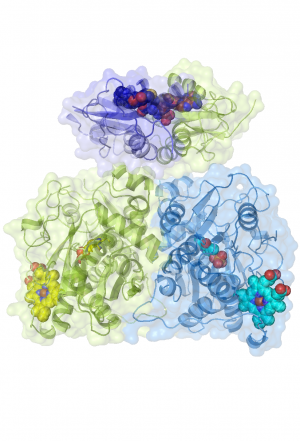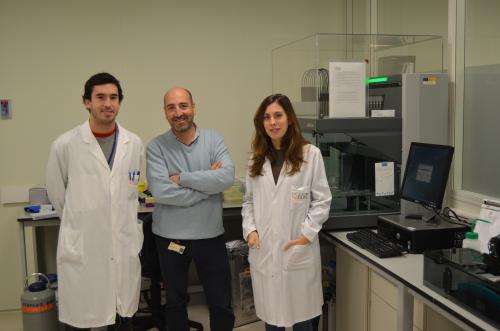Study discovers how rare disease causing cardiovascular and cognitive disorders is triggered

A study has discovered the molecular mechanism that triggers homocystinuria, which is a rare disease that causes vascular and ocular disorders, skeletal deformities and mental retardation. It affects 1 in every 250,000 children born in Spain, and it has a mortality rate of 18% before the age of 30. The detection of this disease has recently been included in newborn blood spot screening.
Homocystinuria is due to a deficiency in a protein in the body called CBS. When we eat foods rich in certain amino acids, our cells produce homocysteine, which is toxic and causes homocystinuria if it accumulates. The function of CBS is precisely to 'clean' our cells of homocysteine.
In order to carry out this function, the protein has to activate, and this happens in most people. There are genetic mutations, however, that prevent the activation of CBS, which means that it is not able to carry out its 'cleaning' function, and leads to the development of homocystinuria.
The study, which was published recently in Proceedings of the National Academy of Sciences, revealed the morphological changes that the CBS protein undergoes when it activates.
Discovering how this protein works is a major breakthrough in the fight against homocystinuria, because it will enable research into the development of drugs that manage to activate CBS in patients suffering from this protein deficiency. If these drugs were to be developed, they would restore the normal function of this molecule and prevent the development of the disease.
Collaboration

This breakthrough has been possible thanks to the collaboration of two research groups led by Martínez de la Cruz from CIC bioGUNE, and Jan P Kraus, researcher at the University of Colorado. Researchers June Ereño, Tomas Majtan and Iker Oyenarte also took part in the study.
'We are highly satisfied, as the CBS protein is a very complex molecule. Several research groups have been trying for decades to discover the morphological changes that characterise its molecular activation mechanism,' says Martínez de la Cruz.
CBS protein
Last year this group discovered the structure of the CBS protein when it is inactive. This study was also published in the Proceedings of the National Academy of Sciences journal. It laid the foundations for the current breakthrough, and both studies combined have discovered the molecule's shape when it is both active and inactive.
A protein has different structures depending on whether it is active or inactive. In fact, the function of a protein is determined by its shape, so it is essential to know it in order to change the protein's behaviour.
Homocystinuria
Homocystinuria is a disease caused by deficient metabolism of methionine, an amino acid. People with this disease present genetic mutations that lead them to accumulate abnormal amounts of homocysteine, which is a product that is generated when ingesting protein in food.
These genetic mutations prevent the activation of the protein CBS, which is in charge of keeping the concentration of homocysteine within certain levels. If concentration levels are higher than normal and it gets into the blood plasma, it becomes toxic and turns into a large risk factor for developing vascular and ocular disorders, skeletal deformities and mental retardation.
There is no cure for this disease, but if it is detected right after birth, some of its complications can be prevented by following a strict diet for life that is low in methionine, and by taking substances such as vitamins B6 and B12 or folic acid, which help to break down homocysteine through alternative metabolic pathways. It is, therefore, convenient to detect the disease as soon as possible, which is why health authorities have included it in neonatal screening.


















